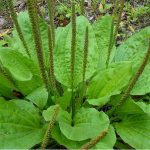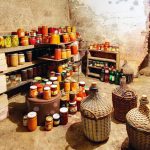
How to store fresh produce for the long-term
Wednesday, November 07, 2018 by Zoey Sky
http://www.starvation.news/2018-11-07-how-to-store-fresh-produce-for-the-long-term.html

As a homesteader, there’s nothing more reassuring than seeing crops thrive in your home garden. For added food security, you can also learn more about long-term food storage. This way, you have access to produce even if the vegetables you want to eat aren’t in season or if there’s a food shortage when SHTF. However, one obstacle that you must face is the fact that fresh produce can’t stay fresh for a long time. Thankfully, there’s one way to store produce for long-term storage, even if you don’t have a large garden or a complicated aquaponics setup. (h/t to BioPrepper.com)
Store vegetables in a root cellar
A root cellar is a cool, humidity controlled room that lets produce last for a very long time. With hard work, you can set up a root cellar so you can easily store extra vegetables for the winter or for your food stockpile. (Related: Storing food without a refrigerator: 25 different kinds of root cellars.)
If you take the time to set up a root cellar in your homestead, you won’t need to exhaust your resources to set up a fully-developed garden or hydro/aquaponics garden.
A root cellar can prolong the shelf-life of fruits and vegetables like:
- Apples
- Beets
- Cabbage
- Carrots
- Celery
- Garlic
- Ginger
- Leafy greens (e.g., Swiss chard and kale)
- Onions
- Parsnips
- Pears
- Potatoes
- Pumpkin
- Rutabagas
- Squash
- Sweet potatoes
- Tomatoes
- Turnips
- Yams
Each kind of fruit or vegetable must be stored in particular ways and temperatures to ensure longevity without refrigeration. The good thing is, some vegetables can be stored in sand with the same controlled humidity, such as cabbage, celery, and leafy greens like kale and chard. You can store these vegetables for at least three to five months with only minimal waste at about 32 degrees F.
Potatoes, onions, turnips, all kinds of squash, and yams can also be stored in similar conditions. However, they must be “cured” properly in specific ways. Once these vegetables are prepared, they can all be stored in a very similar environment and at 32 to 45 degrees F.
Alternative ways to start root cellaring
The root cellaring ideology can be practiced even if you don’t have a cellar in your home. For example, in a third world country, a “root cellar” can be made out of sand, terracotta pots, and water. Alternatively, an unused trash can may be buried, incorporated with hay and newspaper, then covered properly to build a makeshift root cellar.
For root cellaring to work properly, you need to control humidity. Humidity is the main reason why you need different storage vessels for produce.
If you’re not sure what kind of vegetable you want to store in a root cellar, you can start with ginger root. Ginger has a rind that lets the moisture stay intact until it’s broken, and its relatively firm flesh ensures that bruising is minimized. Bruising hastens the degradation of fruits and vegetables, and this is why it’s better to store fresh, ripe, unblemished, and uncut produce in your root cellar.
When stored properly, garlic can also last for a long time in a root cellar. This versatile spice can be used for cooking, and it also has various medicinal applications, making it a staple in any root cellar. If you keep garlic on your counter, it will only last for six months. But if you store garlic properly in a root cellar, it can last for about 18 months or more.
Beets and other similar root vegetables such as potatoes and turnips are also perfect for root cellaring. These vegetables can last for more than one year without any notable degradation in taste or texture. This is one reason why preppers prefer root cellar storage to buying waterlogged canned vegetables.
According to root cellaring experts, it’s better to store homegrown produce since these will last much longer compare to store-bought produce. Visit a local farm to purchase high-quality produce. Use the right “curing” techniques so the food lasts for a long time in your root cellar.
Keep these tips in mind if you want to start storing food in a root cellar so you’re ready before SHTF.
You can read more articles with tips on long-term storage for fruits and vegetables at FoodSupply.news.
Sources include:
Tagged Under: Tags: canned food, food independence, Food Preservation, Food storage, food supply, fruits and vegetables, home canning, homesteading, how to, off grid, organics, preparedness, prepper, prepping, root cellar, survival, survival food





